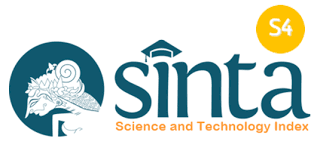Communication patterns cares for children and Deli river in building the moral of children in the River
DOI:
https://doi.org/10.12928/commicast.v3i1.3508Keywords:
Communication Patterns , Morals , ChildrenAbstract
A group of people who have the same goals and vision will form a group. A group can be used as a forum to communicate and exchange ideas and information. In exchanging information, ideas, and ideas some patterns have been agreed upon by the group. This study aims to determine the communication patterns formed by the Child Care Community and the Deli River in building children's morale on the riverside. This research uses a descriptive qualitative approach by collecting data through observation, in-depth interviews, and literature study. The results showed that there were forms of communication patterns from the child care community and the Deli River in building the morale of the children on the riverbank, with various patterns of one-way communication, two-way communication.
References
Bentham, J. (2020). An Introduction to the Principles of Morals and Legislation. In Princeton Readings in Political Thought. https://doi.org/10.2307/j.ctv19fvzzk.34
Berger, C. R., & Roloff, M. E. (2019). Interpersonal communication. In An Integrated Approach to Communication Theory and Research, Third Edition. https://doi.org/10.4324/9780203710753-24
Brenner, J. E., & Igamberdiev, A. U. (2021). Communication. In Studies in Applied Philosophy, Epistemology and Rational Ethics. https://doi.org/10.1007/978-3-030-62757-7_12
Effendy, O. U. (2009). Ilmu Komunikasi, Teori dan Praktek. In Komunikasi dalam sebuah organisasi.
Horn, C., & Schönecker, D. (2008). Groundwork for the metaphysics of morals. In Groundwork for the Metaphysics of Morals. https://doi.org/10.1017/cbo9780511809590.004
Jandevi, U. (2019). Communication strategy to improve women’s political participation in Indonesia. International Journal of Communication and Society, 1(2), 68–81. https://doi.org/10.31763/ijcs.v1i2.46
Kartika Ekasari, Z., Saleh, S. A. M., Jusoff, K., Salman, D., Akhsan, Kasirang, A., … Fudjaja, L. (2013). Communication pattern and conflict in agricultural extension. Asian Social Science. https://doi.org/10.5539/ass.v9n5p27
Moleong, L. J. (2018). Metodologi Penelitian Kualitatif, cet. In XI. Bandung: PT Remaja Rosdakarya.
Palla, G., Barabási, A. L., & Vicsek, T. (2007). Quantifying social group evolution. Nature. https://doi.org/10.1038/nature05670
Pribadi, A., & Nasution, N. (2021). Digital transformation to the sustainability of public relations profession in the era of disruption. Commicast, 2(1), 52. https://doi.org/10.12928/commicast.v2i1.3149
Shannon, C. E. (1997). The Mathematical Theory of Communication. M.D. Computing. https://doi.org/10.2307/410457
Williamson, O. E. (2019). Transaction-cost economics: The governance of contractual relations. In Corporate Governance: Values, Ethics and Leadership. https://doi.org/10.1086/466942
Young, R. (2016). Persuasive Communication. In Persuasive Communication. https://doi.org/10.4324/9781315687117
Downloads
Published
Issue
Section
License
Copyright (c) 2021 Sima Insani, Abrar Adhani

This work is licensed under a Creative Commons Attribution-ShareAlike 4.0 International License.
License and Copyright Agreement
In submitting the manuscript to the journal, the authors certify that:
- They are authorized by their co-authors to enter into these arrangements.
- The work described has not been formally published before, except in the form of an abstract or as part of a published lecture, review, thesis, or overlay journal. Please also carefully read Commicast's Posting Your Article Policy at http://journal2.uad.ac.id/index.php/commicast/about/editorialPolicies#custom-5
- That it is not under consideration for publication elsewhere,
- That its publication has been approved by all the author(s) and by the responsible authorities – tacitly or explicitly – of the institutes where the work has been carried out.
- They secure the right to reproduce any material that has already been published or copyrighted elsewhere.
- They agree to the following license and copyright agreement.
Copyright
Authors who publish with Commicast agree to the following terms:
- Authors retain copyright and grant the journal right of first publication with the work simultaneously licensed under a Creative Commons Attribution License (CC BY-SA 4.0) that allows others to share the work with an acknowledgment of the work's authorship and initial publication in this journal.Â
- Authors are able to enter into separate, additional contractual arrangements for the non-exclusive distribution of the journal's published version of the work (e.g., post it to an institutional repository or publish it in a book), with an acknowledgment of its initial publication in this journal.
- Authors are permitted and encouraged to post their work online (e.g., in institutional repositories or on their website) prior to and during the submission process, as it can lead to productive exchanges, as well as earlier and greater citation of published work.
Licensing for Data Publication
Commicast use a variety of waivers and licenses, that are specifically designed for and appropriate for the treatment of data:
Open Data Commons Attribution License, http://www.opendatacommons.org/licenses/by/1.0/ (default)
Creative Commons CC-Zero Waiver, http://creativecommons.org/publicdomain/zero/1.0/
Open Data Commons Public Domain Dedication and Licence, http://www.opendatacommons.org/licenses/pddl/1-0/
Other data publishing licenses may be allowed as exceptions (subject to approval by the editor on a case-by-case basis) and should be justified with a written statement from the author, which will be published with the article.
Open Data and Software Publishing and Sharing
The journal strives to maximize the replicability of the research published in it. Authors are thus required to share all data, code or protocols underlying the research reported in their articles. Exceptions are permitted but have to be justified in a written public statement accompanying the article.
Datasets and software should be deposited and permanently archived inappropriate, trusted, general, or domain-specific repositories (please consult http://service.re3data.org and/or software repositories such as GitHub, GitLab, Bioinformatics.org, or equivalent). The associated persistent identifiers (e.g. DOI, or others) of the dataset(s) must be included in the data or software resources section of the article. Reference(s) to datasets and software should also be included in the reference list of the article with DOIs (where available). Where no domain-specific data repository exists, authors should deposit their datasets in a general repository such as ZENODO, Dryad, Dataverse, or others.
Small data may also be published as data files or packages supplementary to a research article, however, the authors should prefer in all cases a deposition in data repositories.



















